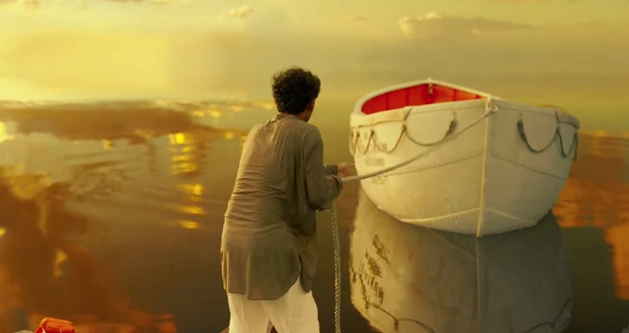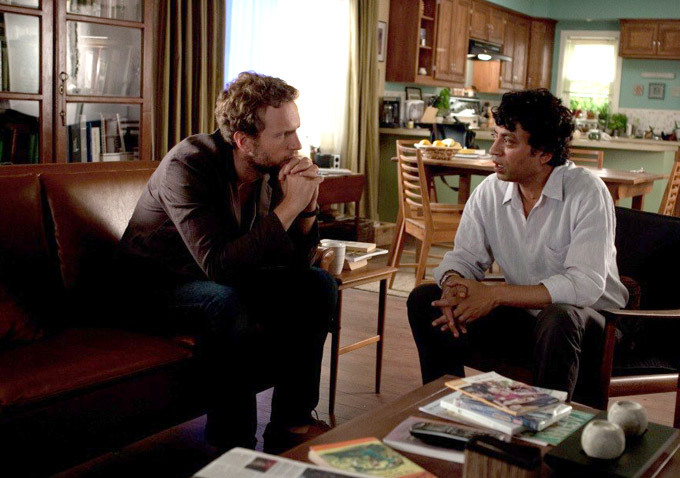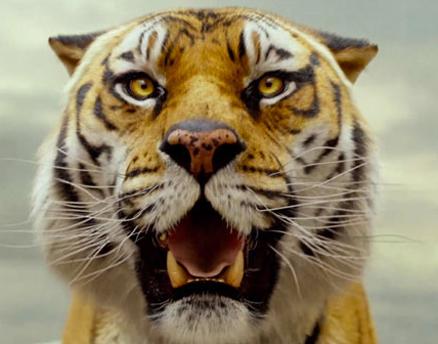Eat Drink Man Woman was about a woman who had to defer her dreams of being a professional chef in order to advance her career as a corporate executive and take care of her father. The Ice Storm was about a whole family struggling with the traditional concept of the nuclear family and the more liberating sexual revolution of the 1970s. Brokeback Mountain was about a married man living in a prejudiced society who had to repress his homosexuality.
Now, with Life of Pi, Ang Lee has created his most powerful and complex film yet about how our innate needs and wishes can conflict with the wider society.
Life of Pi is based upon the Man Booker Prize winning novel of the same name by Yann Martel. The film and book are about an Indian boy named Pi (played by Suraj Sharma as the young Pi, and Irrfan Khan as the adult Pi), who forms an unusual relationship with a tiger named Richard Parker. After Pi survives a shipwreck, he is stranded in the ocean on a single lifeboat with Richard Parker, and he must learn how to live with and eventually gain the trust of the unpredictable tiger.
From this simple story, Ang Lee creates a complex, multi-layered meditation on the nature of faith, compassion, and most importantly, the reconciliation of our inner desires with what society expects of us. Life of Pi is told in flashbacks, as the adult Pi meets with a writer who wants to tell his story.
The first part of Life of Pi deals with Pi’s journey to find God, as he moves from one religion to another. At the same time, Pi’s spiritual journey keeps getting interrupted by his father, whose strict secular worldview conflicts with Pi’s more religious leanings.
Pi’s father represents the wider society that Pi always finds himself competing with; in a world dominated by science and technology, how can someone as spiritually adventurous as Pi survive? However, Pi is a headstrong individual, and he’s constantly getting in trouble with both his father and the society at large with his restless yearning to find deeper meaning in the world.
Pi’s journey leads him to being adrift in a single lifeboat, where his worldview and very survival depend on how he deals with a carnivorous, dangerous tiger. The tiger is symbolic of many things—it represents Pi’s own strong-willed, unyielding nature in the face of a society that won’t accept his beliefs, and it also is a stand-in for Pi’s father who, like the tiger, is both a figure of menace and threat, and also of immense compassion.
With the many visually astonishing scenes of Pi and the tiger framed against the vastness of the ocean, one gets the sense that there is a higher force at work, watching over Pi and guiding him in his journey of survival. For the more religiously inclined, this force can be described as being God, but Ang Lee takes this concept further by suggesting that God is more than just a single, all-powerful figure.
Instead, Ang Lee suggests that God is nature itself, as revealed in an astonishing sequence where Pi and the tiger find themselves on a lush island. The island is a bountiful source of nutrients and fresh water for Pi and the tiger to live off of, but at the same time Pi discovers that the island also contains a more dangerous side which can lead to death. Ang Lee is equating nature in the form of the island with God—both forces have the power to give and take away.
In purely cinematic terms, Life of Pi contains some of the most visually ravishing scenes in film history. The aforementioned scenes on the island re-awaken a sense of wonder and amazement that has been missing in many of the more cynically inclined films of recent years. Ang Lee uses 3D to astonishing effect in the many awe-inspiring scenes of Pi and the tiger as they encounter the variety of life that exists in the vastness of the ocean.
Instead of using 3D to thrill the audience with cheap effects such as creatures popping out of the screen, Ang Lee is more interested in using the medium to engulf the viewer in what can best be called a communal re-connection with nature. In one particularly effective scene, we see Pi and his lifeboat appearing as little more than a dot against the expansive ocean at night; the ocean waters reflect all the stars above, so it looks like Pi is floating through the vastness of space.
However, unlike some other recent 3D films, Ang Lee doesn’t let the technical spectacle of his film overwhelm the more intimate and philosophical aspects. Life of Pi isn’t just about visual splendor and 3D effects; instead, it is a deep meditation on life and death, and our ultimate place in the universe.




No comments:
Post a Comment